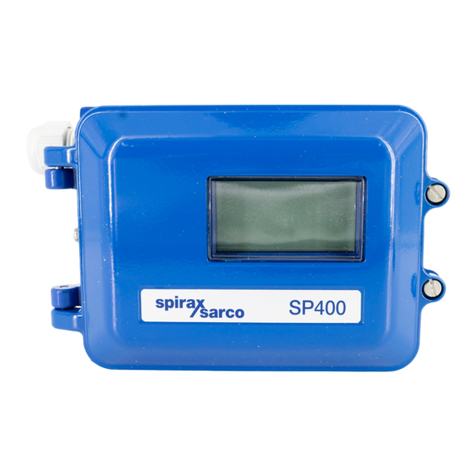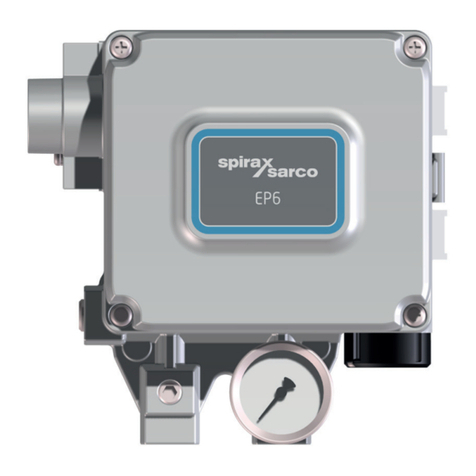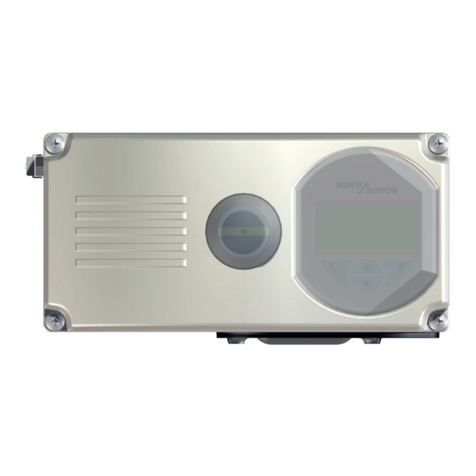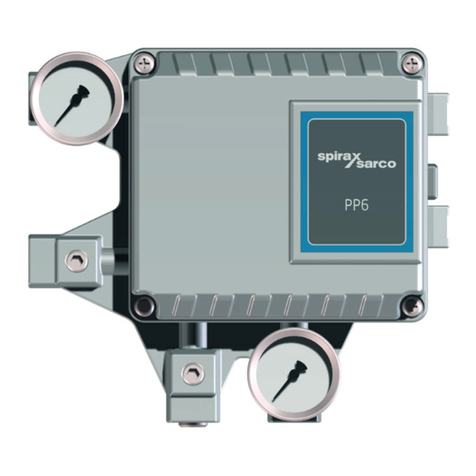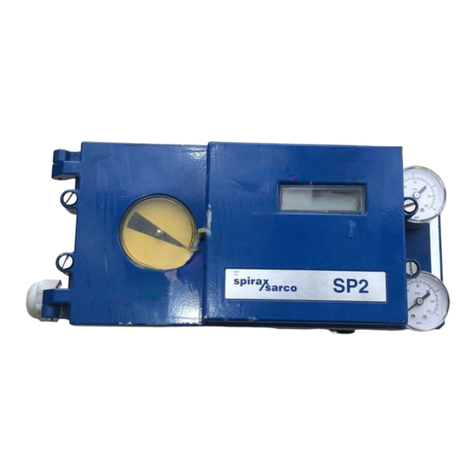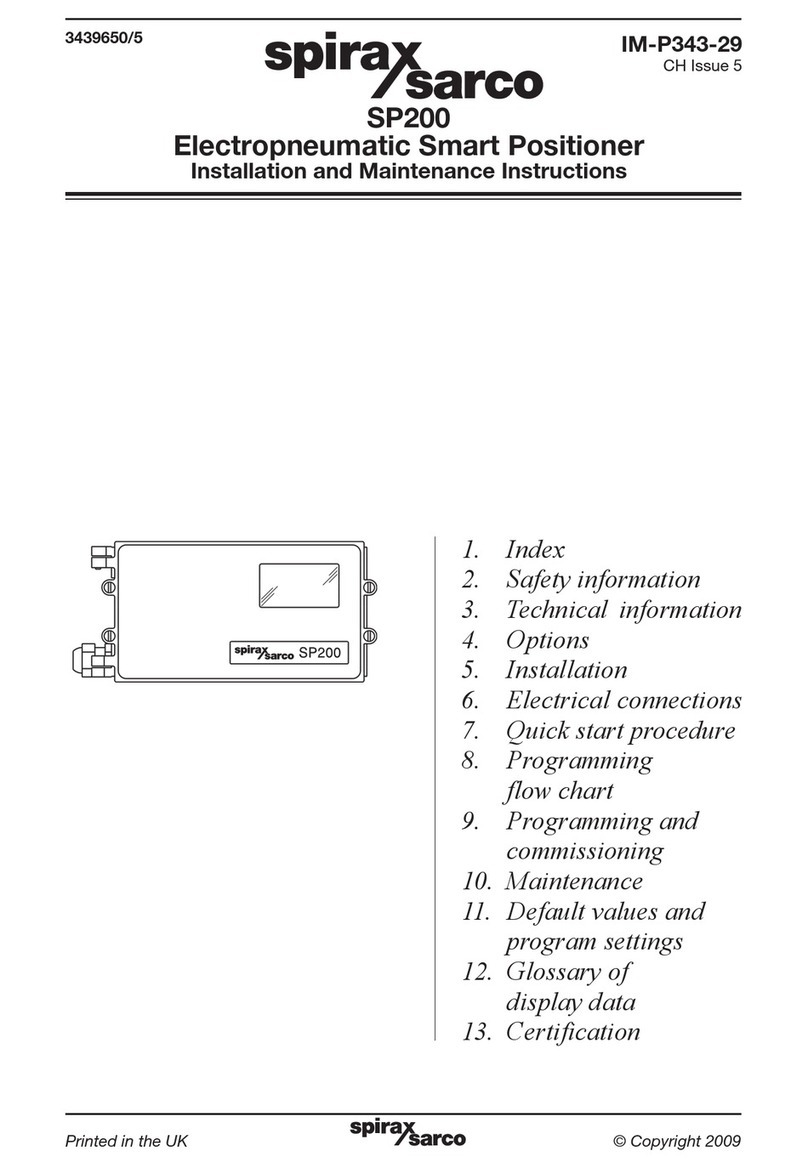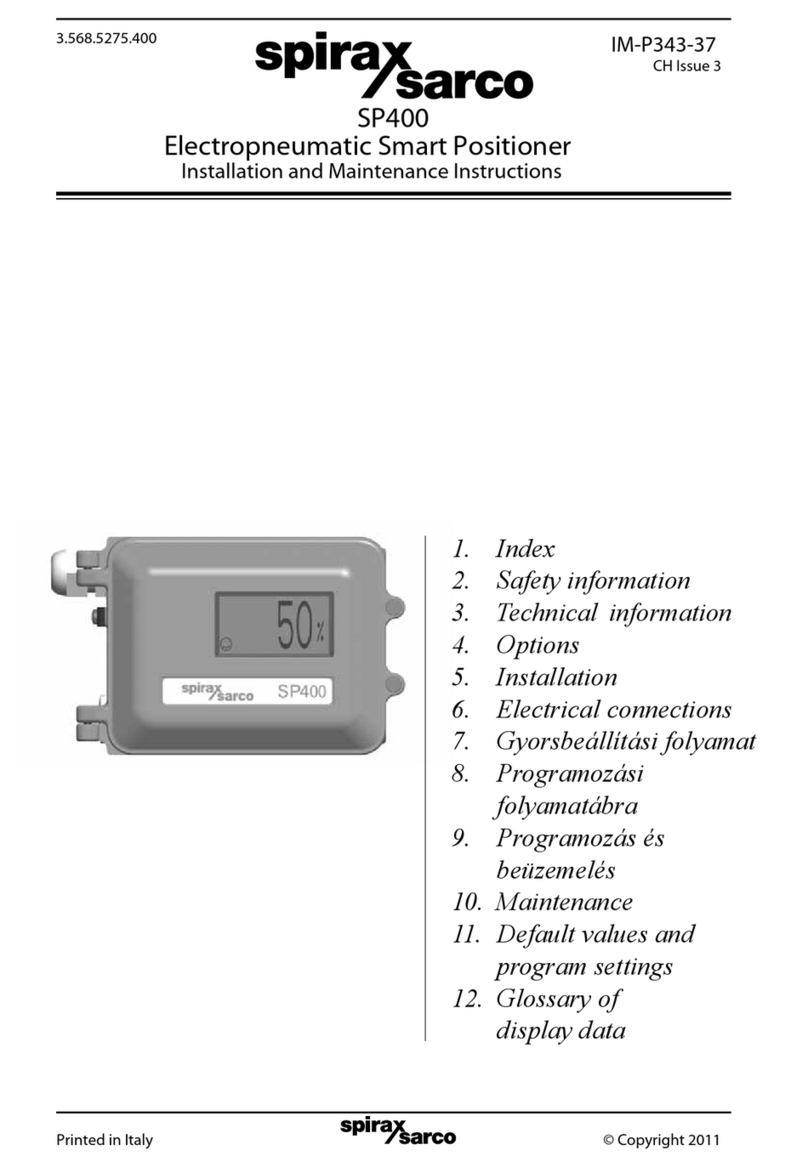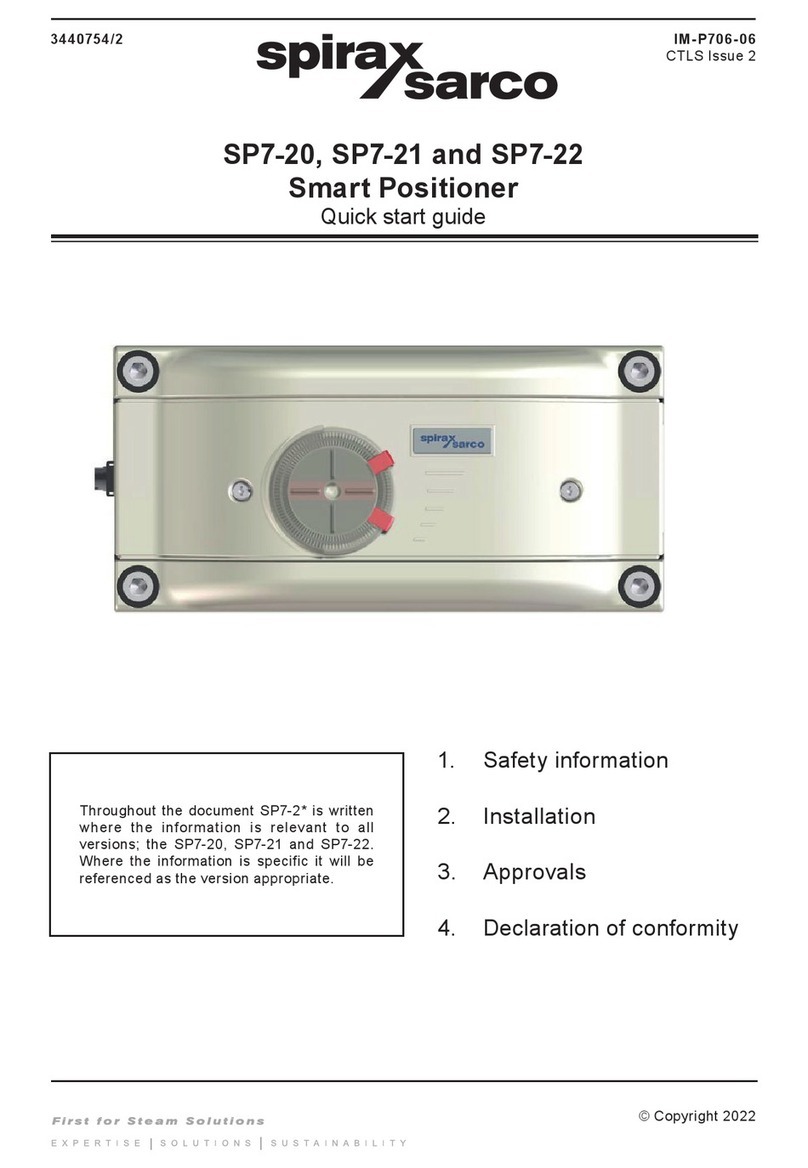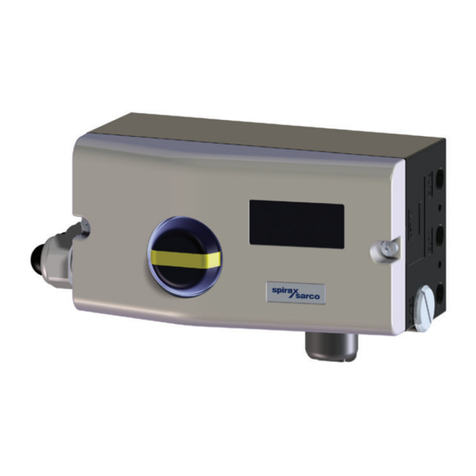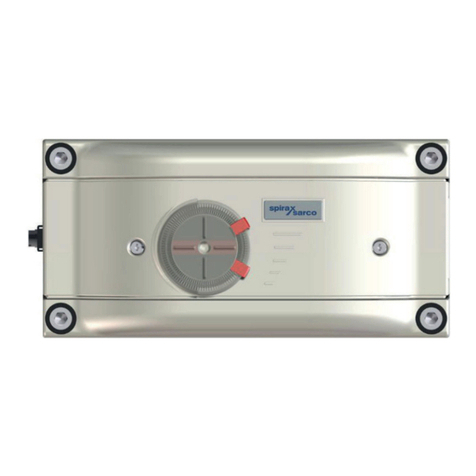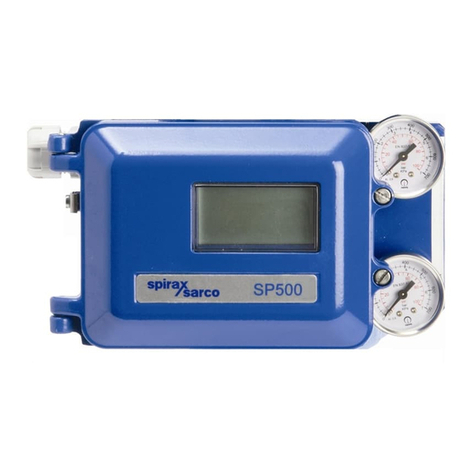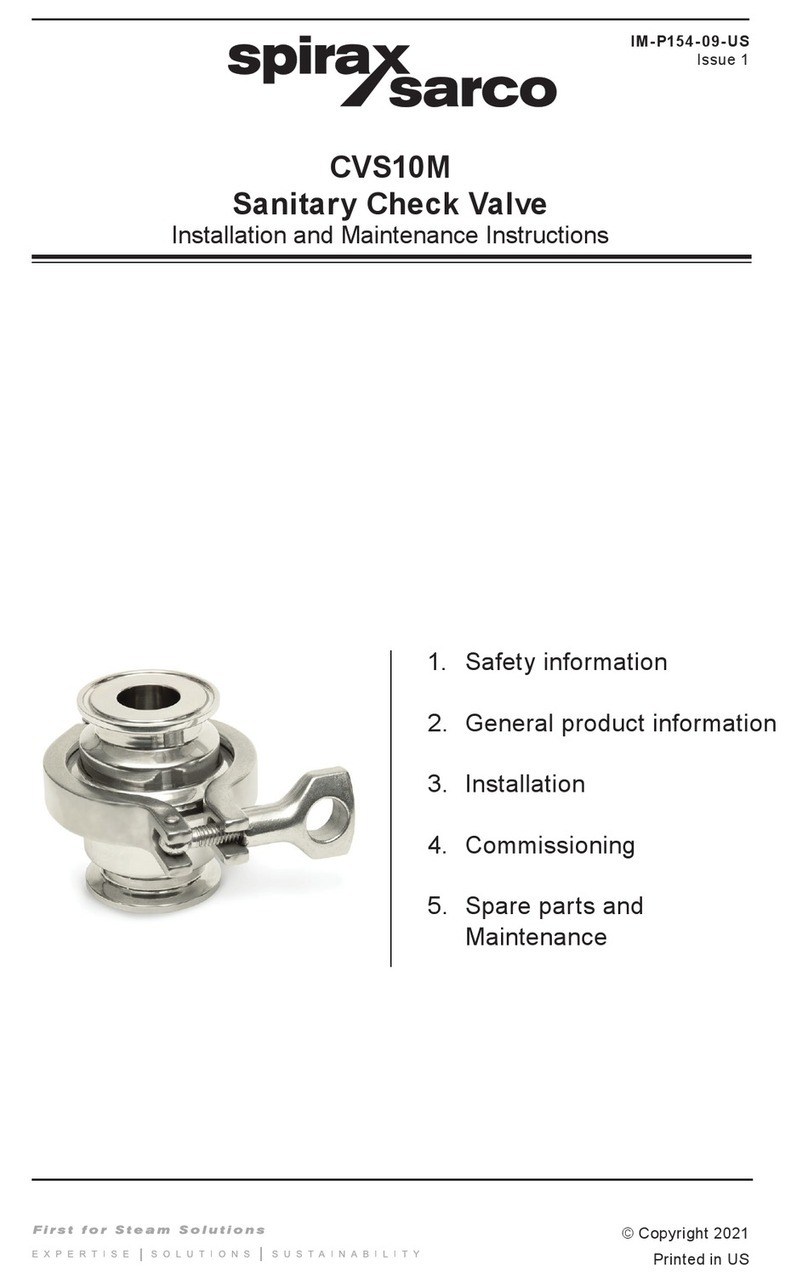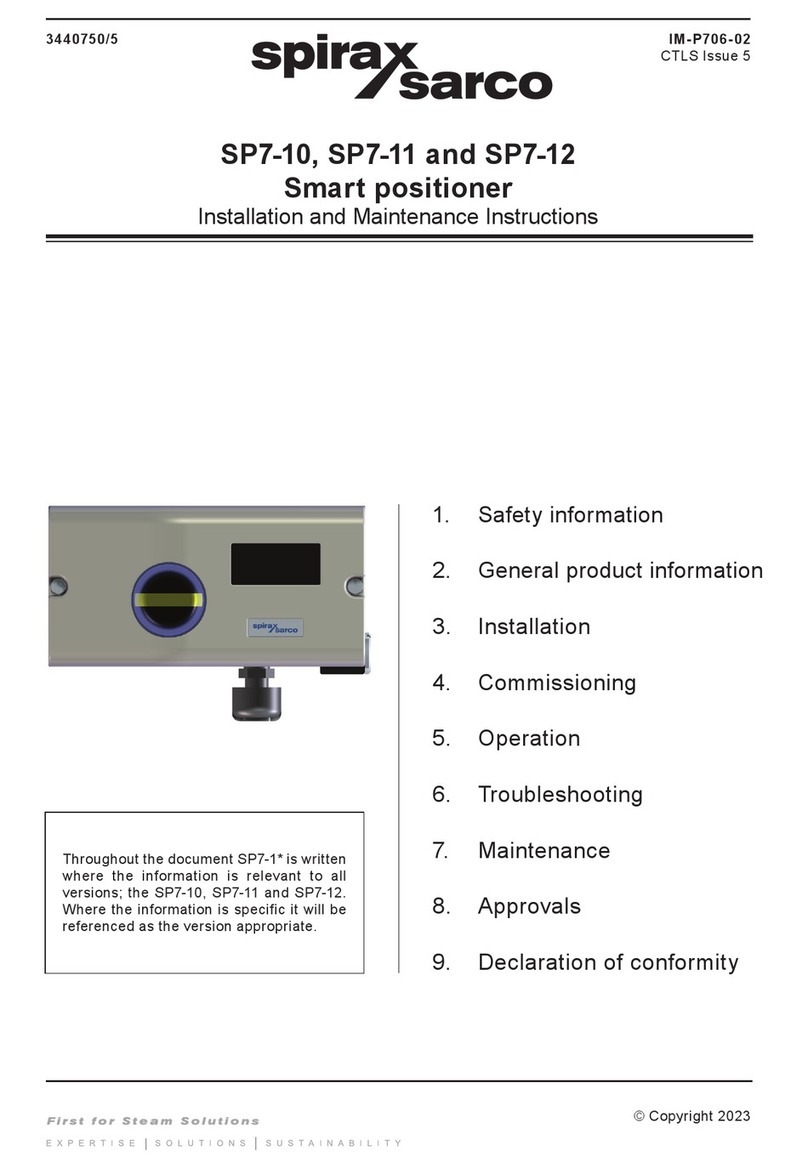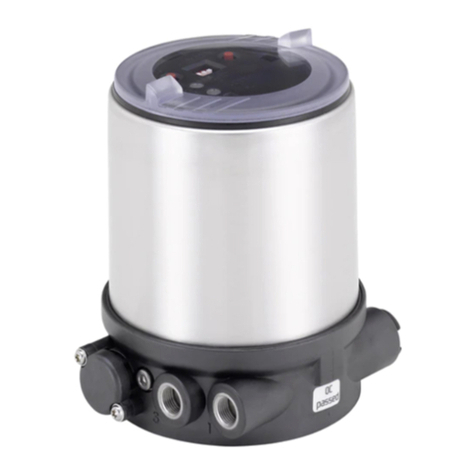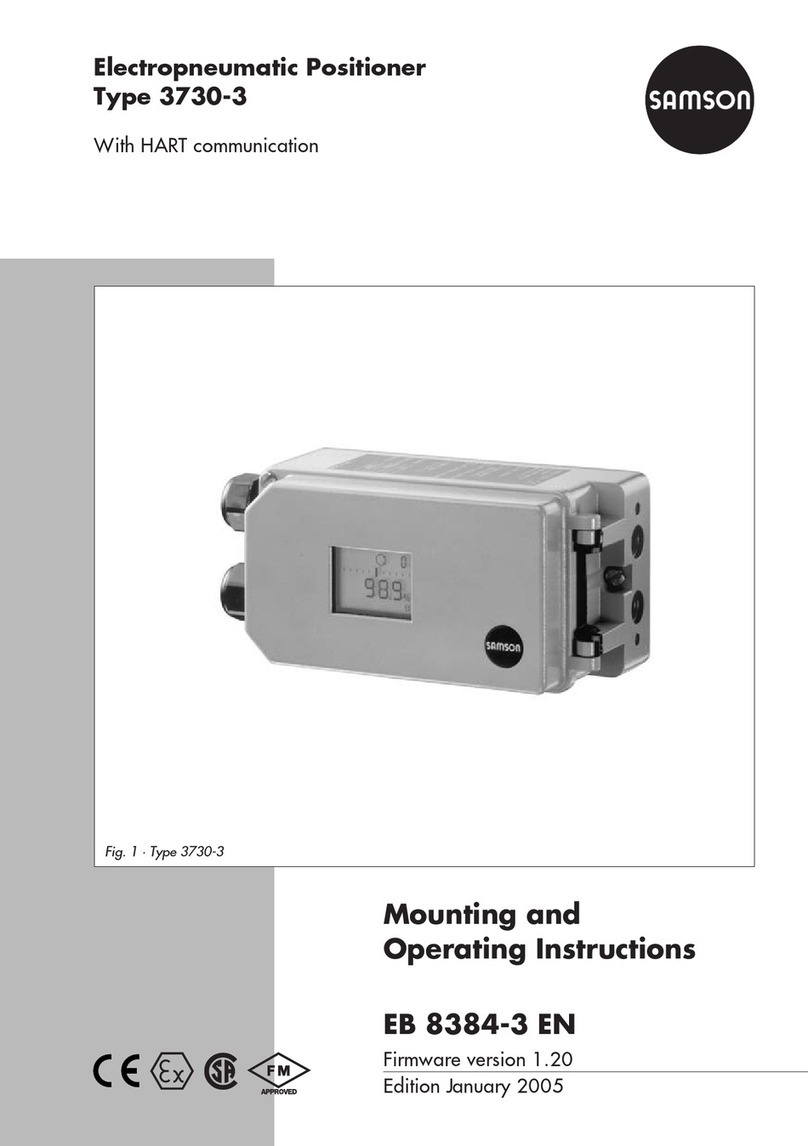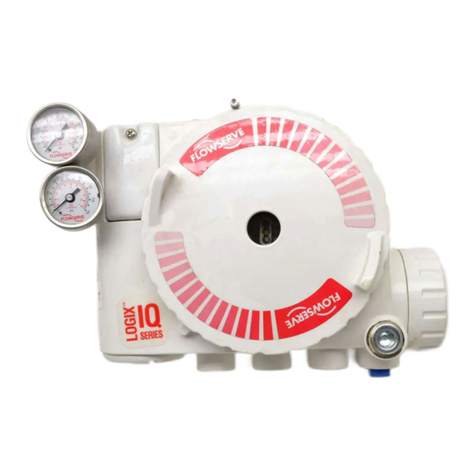
3
3.568.5275.906
INFORMAZIONI GENERALI PER LA
SICUREZZA
Il funzionamento sicuro di questi prodotti può
essere garantito soltanto se essi sono installati,
messi in servizio, usati e manutenzionati in
modo appropriato da personale qualificato
(vedere il paragrafo 11 di questo capitolo) in
conformità con le istruzioni operative. Ci si
dovrà conformare anche alle istruzioni generali
di installazione di sicurezza per la costruzione di
tubazioni ed impianti, nonché all’appropriato uso
di attrezzature ed apparecchiature di sicurezza.
Per l'uso in presenza di atmosfera potenzialmente
esplosiva la temperatura massima del uido di
processo deve essere idonea all'ambiente stesso in
cui èpresente l'atmosferapotenzialmente esplosiva.
Per la manutenzione dell'apparecchio in presenza
di atmosfera potenzialmente esplosiva si prescrive
l'utilizzo di utensili che non generino e/o producano
scintille.
1. Uso previsto
Con riferimento alle istruzioni di installazione e
manutenzione, alla targhetta dell’apparecchio ed
alla Specica Tecnica, controllare che il prodotto
sia adatto per l’uso/l’applicazione previsto/a.
Il prodotto è conforme ai requisiti della Direttiva
Europea 2014/34/UE (ATEX).
2. Accesso
Garantire un accesso sicuro e, se è necessario,
una sicura piattaforma di lavoro (con idonea
protezione) prima di iniziare ad operare sul
prodotto. Predisporre all’occorrenza i mezzi di
sollevamento adatti.
3. Illuminazione
Garantire un’illuminazione adeguata,
particolarmente dove è richiesto un lavoro
dettagliato o complesso.
4. Liquidi o gas pericolosi presenti nella
tubazione
Tenere in considerazione il contenuto della
tubazione od i uidi che può aver contenuto
in precedenza. Porre attenzione a: materiali
inammabili, sostanze pericolose per la salute,
estremi di temperatura.
5. Situazioni ambientali di pericolo
Tenere in considerazione: aree a rischio di
esplosione, mancanza diossigeno (p.es. serbatoi,
pozzi), gas pericolosi, limiti di temperatura,
superci ad alta temperatura, pericolo di incendio
(p.e. durante la saldatura), rumore eccessivo,
macchine in movimento.
SAFETY INFORMATION
Safe operation of these products can only
be guaranteed if they are properly installed,
commissioned, used and maintained by qualied
personnel (see paragraph 11 on this section)
in compliance with the operating instructions.
General installation and safety instructions for
pipeline and plant construction, as well as the
proper use of tools and safety equipment must
also be complied with.
For use in potential explosive atmosphere, the
maximum process uid temperature
must be suitable for environment where this
potential explosive atmosphere is present. For
the device maintenance in potential explosive
atmosphere, we recommend the usage of tools
which do not produce and/or propagate sparks.
1. Intended use
Referring to the Installation and Maintenance
Instructions, name-plate and Technical
Information Sheet, check that the product is
suitable for the intended use / application. The
products comply with the requirements of the
European Directive 2014/34/EU (ATEX).
2. Access
Ensure safe access and if necessary a safe
working platform (suitably guarded) before
attempting to work on the product. Arrange
suitable lifting gear if required.
3. Lighting
Ensure adequate lighting, particularly where
detailed or intricate work is required.
4. Hazardous liquids or gases in the
pipeline
Consider what is in the pipeline or what may
have been in the pipeline at some previous
time. Consider: ammable materials, substances
hazardous to health, extremes of temperature.
5. Hazardous environment around the
product
Consider: explosion risk areas, lack of oxygen
(e.g. tanks, pits), dangerous gases, extremes of
temperature, hot surfaces, re hazard (e.g. during
welding), excessive noise, moving machinery.
